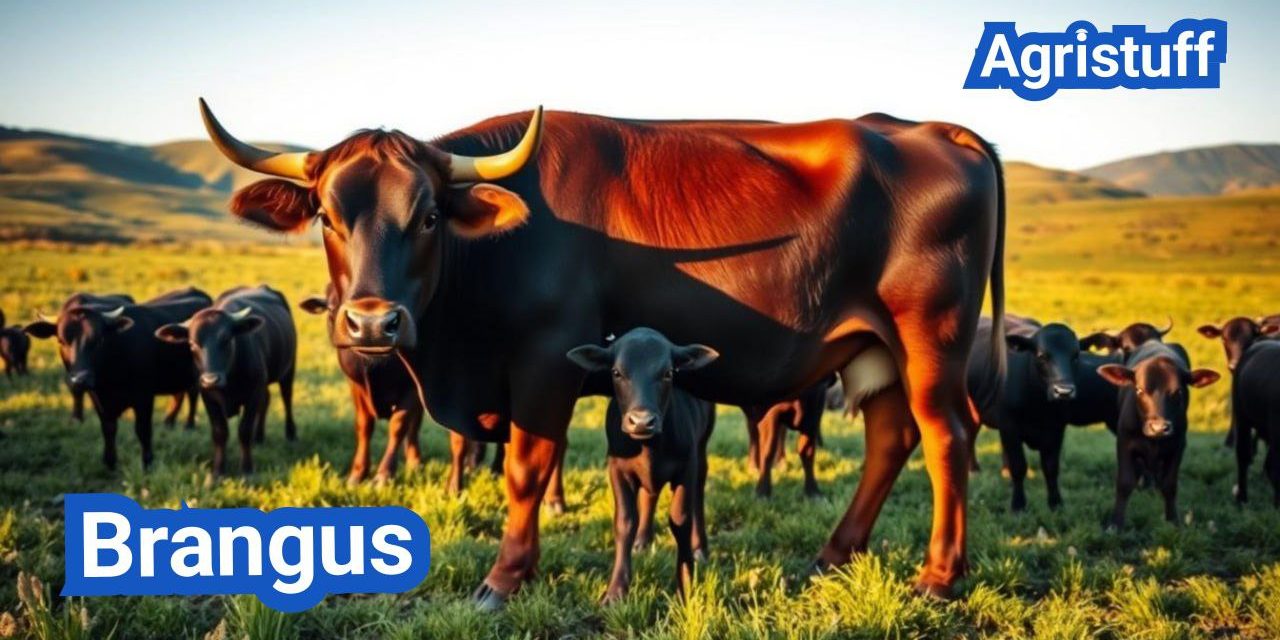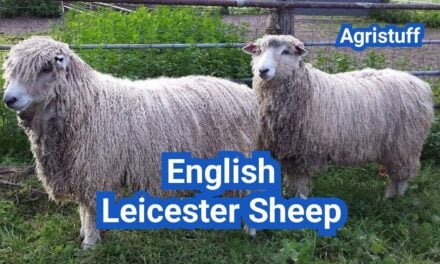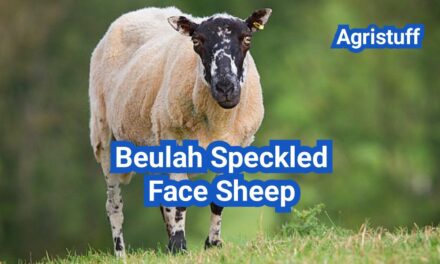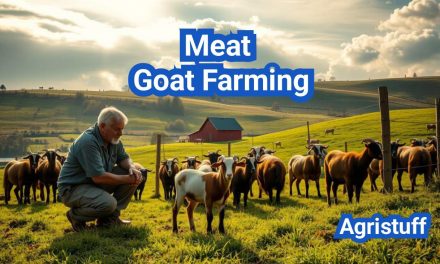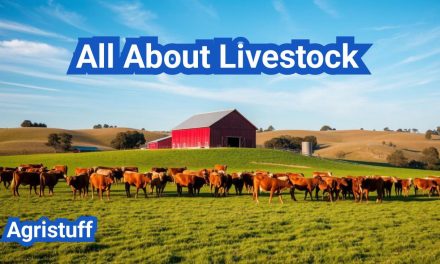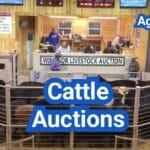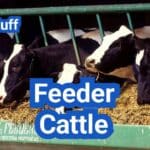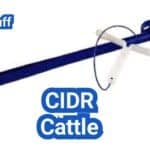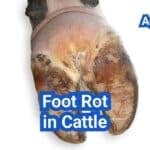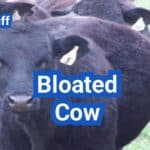The Brangus cow is a notable crossbreed that has gained recognition for its exceptional qualities in both meat production and adaptability. By combining the best traits of Angus and Brahman cattle, this breed offers a robust solution for farmers across various climates and farming conditions.
This American hybrid breed of beef cattle is particularly valued for its ability to thrive in diverse environments, making it an ideal choice for sustainable beef farming. The adaptability of the Brangus cow, coupled with its high-quality meat, positions it as a preferred option for farmers looking to optimize their cattle for both resilience and productivity.
Key Takeaways
- Efficient crossbreed for meat production and adaptability.
- Combines the best traits of Angus and Brahman cattle.
- Ideal for sustainable beef farming due to its adaptability.
- Thrives in various climates and farming conditions.
- Preferred for its high-quality meat and resilience.
The Origin and Development of Brangus Cattle
The development of Brangus cattle is a story of innovation in cattle breeding, merging the hardiness of Brahman with the superior meat quality of Angus. This crossbreeding program was initiated to create a breed that could thrive in various environmental conditions while producing high-quality beef.
Historical Background of the Angus-Brahman Cross
The Brangus breed was developed by crossing Angus cattle and Brahman cattle. The Angus breed is renowned for its high-quality beef and marbling characteristics, while the Brahman breed is known for its heat tolerance and hardiness. The combination of these two breeds resulted in the Brangus, which inherits the beneficial traits from both parents.
The idea behind this crossbreeding was to create a cattle breed that could adapt to different climates and management systems. The Angus-Brahman cross was first recognized in the United States, where breeders sought to improve the adaptability and productivity of their cattle herds.
Development Timeline and Breed Recognition | Brangus Cow
The development of the Brangus breed began in the early 20th century. The American Brangus Breeders Association was established to promote and register Brangus cattle. Over the years, the breed has gained recognition for its superior genetics and adaptability.
- The initial crossbreeding programs focused on combining the desirable traits of Angus and Brahman cattle.
- The breed gained popularity due to its hardiness and meat quality.
- The American Brangus Breeders Association played a crucial role in the breed’s development and recognition.
Purpose Behind Creating the Brangus Breed
The primary purpose behind creating the Brangus breed was to produce cattle that could thrive in a variety of environments. By combining the heat tolerance of Brahman cattle with the meat quality of Angus, breeders aimed to create a versatile and productive breed.
“The Brangus breed represents a successful blend of two distinct cattle breeds, offering the advantages of both hardiness and high-quality beef production.” – Cattle Breeding Expert
The Brangus breed has become a popular choice among cattle producers due to its adaptability, fertility, and growth rate. Its development is a testament to the innovation and expertise of cattle breeders who sought to create a superior breed through careful crossbreeding programs.
Understanding the Brangus Cow: Key Characteristics

With its unique blend of Angus and Brahman genetics, the Brangus cow offers a combination of high-quality beef and adaptability to different environments. This crossbreed has gained popularity among ranchers due to its robust characteristics, which make it an ideal choice for various cattle operations.
Physical Appearance and Color Variations
The Brangus cow typically exhibits a sleek, black coat, although red variations are also common due to the influence of the Angus breed. The breed can display a range of colors from black to red, with some animals showing a slight hump or a mix of both colors. The physical appearance is often characterized by a sturdy build and a muscular structure, inherited from its parent breeds.
Size and Weight Specifications | Brangus Cow
Brangus cattle are known for their impressive size and weight. Mature cows typically weigh between 1,000 to 1,200 pounds, while bulls can reach weights of up to 1,800 pounds. Their size and muscular build contribute to their productivity and the quality of beef they produce.
Temperament and Behavioral Traits | Brangus Cow
The temperament of Brangus cattle is generally docile, making them easier to handle compared to some other breeds. They are known for their intelligence and adaptability, traits that are beneficial for ranchers managing large herds. The breed’s behavioral traits also include a strong maternal instinct, which is crucial for calf rearing.
Lifespan and Productivity Timeline | Brangus Cow
Brangus cows are recognized for their longevity and productivity. They have an average lifespan of 10 to 12 years, during which they can produce high-quality calves. The breed’s productivity timeline is marked by early maturity, with heifers often being bred at around 15 months of age. This early maturity contributes to the overall efficiency of a Brangus cattle operation.
The Superior Genetics of Brangus Cattle
Combining the best traits of Angus and Brahman breeds, Brangus cattle offer exceptional genetic advantages. This crossbreed has been carefully developed to leverage the strengths of both parent breeds, resulting in cattle that are not only robust and adaptable but also renowned for their high-quality beef.
Angus Contribution to the Breed
The Angus breed brings to the Brangus table its well-documented history of producing premium beef. Known for its marbling ability, Angus genetics enhance the meat quality of Brangus cattle, making them highly sought after in the beef industry. The Angus influence also contributes to the finer bone structure and overall conformation of Brangus cattle, attributes that are highly valued in beef production.
Key contributions from Angus include:
- Enhanced marbling and meat quality
- Improved bone structure and conformation
- Increased growth rate and efficiency
Brahman Influence on Adaptability
The Brahman breed is celebrated for its heat tolerance and resistance to pests and diseases, traits that are crucial for cattle raised in challenging environmental conditions. By incorporating Brahman genetics, Brangus cattle inherit these beneficial characteristics, making them highly adaptable to a variety of climates and management systems.
The Brahman influence is particularly evident in:
- Heat tolerance and resistance to extreme temperatures
- Enhanced resistance to parasites and diseases
- Hardiness and longevity in diverse environments
Genetic Advantages of the Crossbreed | Brangus Cow
The crossbreeding of Angus and Brahman cattle results in a phenomenon known as hybrid vigor, where the offspring exhibit superior qualities compared to either parent breed. This genetic advantage manifests in improved growth rates, increased fertility, and enhanced overall hardiness of Brangus cattle.
The genetic diversity introduced by combining Angus and Brahman breeds also reduces the risk of genetic disorders and improves the immune system of Brangus cattle. This makes them more resilient and productive under a range of farming conditions.
F1 Brangus and Genetic Considerations
F1 Brangus cattle, being the first-generation cross between Angus and Brahman, are particularly valued for their consistent performance and genetic diversity. Breeding programs often utilize F1 Brangus to capitalize on the benefits of hybrid vigor, although careful consideration must be given to maintaining the optimal balance of genetics from both parent breeds.
Genetic considerations for F1 Brangus include:
- Maintaining the balance between Angus and Brahman genetics
- Selecting for desirable traits while minimizing the risk of genetic disorders
- Utilizing F1 Brangus in breeding programs to enhance productivity and hardiness
How to Select Quality Brangus Cows for Your Herd

The process of choosing quality Brangus cows involves a thorough evaluation of several important characteristics. Selecting the right Brangus cows is crucial for the success and productivity of your cattle operation.
Evaluating Physical Traits and Conformation
When evaluating Brangus cows, their physical traits and conformation are critical factors. Look for cows with a sturdy build, straight back, and well-proportioned body. The udder quality is also essential, particularly for cows that will be used for breeding.
Key Physical Traits to Evaluate:
- Structural correctness
- Muscling and overall body depth
- Udder quality and teat placement
- Hoof quality and leg soundness
Assessing Genetic Background and Records | Brangus Cow
Assessing the genetic background of Brangus cows is vital for making informed decisions. Review the cow’s pedigree and performance records to understand its breeding potential. Registered Brangus cattle have documented lineage, which can provide insights into their expected productivity and quality.
“The genetic makeup of Brangus cattle is a key factor in their adaptability and productivity. By selecting cattle with superior genetics, breeders can enhance the overall quality of their herd.”
— Dr. John Smith, Cattle Breeding Expert
Choosing Between Black and Red Brangus
Brangus cattle come in two main color variations: Black and Red. The choice between these depends on your specific breeding goals and market preferences. Both colors have their advantages, and the decision should be based on factors like climate adaptability and market demand.
| Characteristics | Black Brangus | Red Brangus |
|---|---|---|
| Heat Tolerance | High | High |
| Market Demand | Strong in most markets | Growing demand |
| Genetic Diversity | Wide range of genetics | Increasing genetic pool |
Where to Purchase Registered Brangus Stock
To find registered Brangus stock, breeders can search through reputable breed associations, cattle auctions, and private sales. It’s essential to work with established breeders who can provide detailed records and health guarantees.
Resources for Finding Registered Brangus:
- International Brangus Breeders Association
- Local cattle auctions and breed-specific sales
- Private treaty sales from reputable breeders
Setting Up Your Brangus Cattle Operation
To set up a thriving Brangus cattle farm, it’s essential to consider several key factors, including land requirements, facility setup, and pasture management. A successful operation begins with a solid foundation, which involves careful planning and management of resources.
Land and Facility Requirements
The first step in establishing a Brangus cattle operation is to assess your land and facility requirements. The quality and quantity of land directly impact the health and productivity of your cattle. Adequate grazing land is crucial, with a general rule of thumb being at least 2-5 acres per cow-calf pair, depending on the region’s forage production.
Facilities should include sturdy fencing to contain the cattle and protect them from predators. The layout should facilitate easy movement of cattle through the operation, including areas for feeding, watering, and handling.
Essential Equipment and Resources
Investing in the right equipment is vital for the efficient management of your Brangus cattle operation. Essential resources include:
- Watering systems that ensure access to clean water
- Feeding equipment, such as troughs and hay storage facilities
- Handling facilities, including chutes and squeeze chutes for veterinary care and cattle management
- Vehicles and trailers for transporting cattle
| Equipment | Description | Importance Level |
|---|---|---|
| Watering Systems | Ensures cattle have access to clean water | High |
| Feeding Equipment | Facilitates efficient feeding practices | High |
| Handling Facilities | Essential for safe and efficient cattle handling | High |
Creating Proper Handling Facilities
Proper handling facilities are critical for the safe and efficient management of your Brangus cattle. This includes designing a well-laid-out handling system that minimizes stress on the animals and enhances worker safety. Key components include a crowding pen, chute, and squeeze chute.
Establishing Pasture Management Systems
Effective pasture management is crucial for maintaining the health and productivity of your Brangus cattle. This involves implementing rotational grazing practices to prevent overgrazing and promote regrowth of forage. It’s also important to monitor pasture health and adjust stocking rates accordingly.
By carefully planning and managing these aspects, you can establish a thriving Brangus cattle operation that is both productive and sustainable.
Nutritional Management for Brangus Cattle

Nutritional management plays a pivotal role in the overall well-being and productivity of Brangus cattle. Proper nutrition is essential for maintaining their health, optimizing growth, and ensuring high-quality meat production.
Developing Optimal Feed Programs
Developing optimal feed programs for Brangus cattle involves understanding their nutritional requirements at different stages of their life cycle. This includes providing a balanced diet that meets their energy, protein, and mineral needs.
A well-designed feed program should consider factors such as age, sex, and production level. For instance, growing calves require more protein and energy compared to mature cows. High-quality forage and concentrate feeds can be used to meet these nutritional demands.
| Nutritional Component | Growing Calves | Lactating Cows | Mature Bulls |
|---|---|---|---|
| Energy (MJ/kg) | 10-12 | 9-11 | 8-10 |
| Protein (%) | 14-16 | 12-14 | 10-12 |
| Calcium (%) | 0.6-0.8 | 0.5-0.7 | 0.4-0.6 |
Implementing Strategic Grazing Rotations
Grazing rotations are crucial for maintaining pasture health and optimizing the nutritional intake of Brangus cattle. By rotating pastures, farmers can prevent overgrazing, promote regrowth, and reduce parasite loads.
“Grazing management is not just about the cattle; it’s also about the land. By rotating pastures, we can improve soil health, biodiversity, and overall ecosystem services.” – Expert in Sustainable Agriculture
Implementing a strategic grazing rotation plan involves dividing pastures into smaller paddocks and moving cattle regularly. This approach not only enhances forage quality but also contributes to sustainable beef farming practices in the USA.
Seasonal Supplementation Guidelines
Brangus cattle have varying nutritional needs across different seasons. Providing seasonal supplementation can help meet these needs, especially during periods of forage scarcity or when nutritional demands are high.
- Winter: Provide high-energy supplements to compensate for poor forage quality.
- Summer: Ensure adequate mineral supplementation to support growth and lactation.
Monitoring Body Condition Scores
Monitoring body condition scores (BCS) is essential for assessing the nutritional status of Brangus cattle. BCS helps farmers identify under or overconditioned animals, allowing for timely adjustments to their feeding programs.
A BCS of 5-6 is generally considered optimal for most production stages. Regular monitoring and record-keeping can help maintain this optimal range, ensuring the overall health and productivity of the herd.
Health Management Practices for Brangus Herds

Maintaining the health of Brangus herds requires a proactive and comprehensive approach to health management. Effective health management practices are crucial for ensuring the overall well-being and productivity of the cattle.
Establishing Preventative Health Protocols
Preventative health protocols are the foundation of a successful Brangus cattle operation. These protocols involve regular monitoring and maintenance to prevent diseases and health issues. Key components include vaccinations, parasite control, and nutritional management.
Implementing a preventative health program requires a thorough understanding of the specific needs of Brangus cattle. Factors such as age, health status, and environmental conditions must be considered when developing these protocols.
Implementing Vaccination Schedules
Vaccination is a critical aspect of maintaining herd health. Developing a vaccination schedule that is tailored to the specific needs of the herd is essential. This involves consulting with a veterinarian to determine the most effective vaccines and timing for administration.
A well-planned vaccination program can significantly reduce the risk of disease outbreaks, thereby protecting the health and productivity of the Brangus herd.
Managing Parasites and Common Diseases
Parasite control is another vital component of health management for Brangus herds. Internal parasites, such as worms, can have a significant impact on cattle health and productivity. Effective parasite management involves regular monitoring and the use of appropriate control measures.
Common diseases affecting Brangus cattle include respiratory infections and reproductive issues. Understanding the risks and implementing strategies to mitigate these risks is crucial for maintaining herd health.
Working with Veterinarians for Herd Health
Collaboration with veterinarians is essential for developing and implementing effective health management practices. Veterinarians can provide valuable insights and guidance on disease prevention, diagnosis, and treatment.
Regular consultations with a veterinarian can help identify potential health issues early, allowing for timely intervention and minimizing the risk of disease outbreaks.
Breeding and Reproduction of Brangus Cows

Brangus cattle breeding involves a combination of genetic selection, reproductive management, and careful planning. The goal is to leverage the hybrid vigor of this crossbreed to enhance productivity and profitability in cattle operations.
Designing Effective Breeding Programs
Designing an effective breeding program for Brangus cattle requires a comprehensive understanding of the breed’s genetics, the production environment, and market demands. Genetic diversity is crucial to avoid inbreeding depression and maintain the health and vigor of the herd.
To develop a robust breeding program, producers should:
- Set clear breeding objectives based on production goals and market requirements.
- Select breeding stock with desirable traits such as growth rate, fertility, and disease resistance.
- Implement a systematic breeding strategy, such as rotational breeding or crossbreeding, to maximize hybrid vigor.
Managing the Breeding Season
Managing the breeding season effectively is critical for achieving high conception rates and synchronizing calving. Synchronization protocols can be used to concentrate the breeding season, making it easier to manage the herd and improve reproductive efficiency.
| Breeding Season Management Strategy | Description | Benefits |
|---|---|---|
| Synchronization Protocols | Use of hormonal treatments to synchronize estrus in the herd. | Improved conception rates, concentrated calving. |
| Bull Selection | Choosing bulls with proven fertility and desirable genetic traits. | Enhanced genetic progress, improved herd fertility. |
| Breeding Soundness Exams | Regular examination of bulls to assess fertility and breeding capability. | Reduced risk of infertility, improved breeding success. |
Calving Management Techniques
Effective calving management is essential for minimizing losses and ensuring the health of both cows and calves. Producers should monitor cows closely during the calving season, providing assistance when necessary and ensuring that newborn calves receive adequate colostrum.
Key calving management techniques include:
- Monitoring cow condition and nutrition during late gestation.
- Providing a clean and safe calving environment.
- Assisting with difficult births and monitoring calf health post-calving.
Selecting Bulls for Genetic Improvement
Selecting the right bulls is crucial for genetic improvement in a Brangus herd. Producers should focus on bulls that offer genetic advantages in terms of growth, fertility, and carcass quality.
When selecting bulls, consider:
- Genetic merit as indicated by Expected Progeny Differences (EPDs).
- Physical soundness and fertility.
- Pedigree and breed composition.
By carefully designing breeding programs, managing the breeding season, implementing effective calving management, and selecting superior bulls, Brangus producers can enhance the productivity and profitability of their operations.
Maximizing the Adaptability of Brangus Cattle

Maximizing the adaptability of Brangus cattle requires a comprehensive understanding of their genetic traits and environmental factors. Brangus cattle, known for their hybrid vigor, combine the hardiness of Brahman cattle with the premium beef characteristics of Angus cattle.
Utilizing Heat Tolerance in Southern Climates
One of the significant advantages of Brangus cattle is their heat tolerance, inherited from their Brahman lineage. This trait makes them particularly suitable for farming in southern climates where high temperatures and humidity can be challenging for other breeds.
Heat tolerance in Brangus cattle is not just about surviving high temperatures; it’s about thriving in conditions that might stress other breeds. “The ability of Brangus cattle to maintain productivity in hot climates is a testament to their robust genetic makeup,” notes a leading cattle breeder.
Adapting Management for Different Environments
Adapting management practices to the specific environment is crucial for maximizing the adaptability of Brangus cattle. This includes adjusting feeding strategies, pasture management, and health protocols according to the local climate and conditions.
- Assessing local climate conditions and adjusting management practices accordingly
- Implementing rotational grazing to optimize pasture use and reduce erosion
- Monitoring cattle health closely and adjusting vaccination and parasite control programs as needed
Seasonal Adjustments for Optimal Performance
Brangus cattle benefit from seasonal adjustments in management practices. For instance, nutritional needs may vary between breeding and calving seasons, and pasture management may need to be adjusted to accommodate these cycles.
By making seasonal adjustments, farmers can ensure that their Brangus cattle are always performing at their best, regardless of the time of year.
Stress Reduction Strategies for Better Adaptability
Reducing stress is critical for maintaining the health and productivity of Brangus cattle. Strategies include providing adequate shade, ensuring access to clean water, and minimizing handling stress through gentle and well-designed handling facilities.
“Reducing stress in cattle not only improves their welfare but also enhances their productivity and the overall profitability of the farm,” says Dr. Jane Smith, a renowned animal welfare expert.
By implementing these strategies, farmers can maximize the adaptability of their Brangus cattle, ensuring they thrive in a variety of environments and production systems.
Producing High-Quality Beef with Brangus Cows

The demand for Brangus beef continues to grow due to its marbling and tenderness. Brangus cattle are renowned for their high-quality beef, making them a popular choice among cattle producers.
Feeding Programs for Premium Beef Production
Developing an effective feeding program is crucial for producing premium Brangus beef. This involves providing a balanced diet that meets the nutritional needs of the cattle. A well-designed feeding program can enhance the marbling and tenderness of the beef, resulting in higher quality grades.
Brangus cattle benefit from a feeding program that includes high-quality forages and grains. The use of nutritional supplements can also be beneficial, especially during periods of nutritional stress.
“A well-managed feeding program is essential for achieving optimal beef quality. By providing Brangus cattle with a balanced diet, producers can enhance the marbling and tenderness of the beef.”
— Dr. John Smith, Cattle Nutrition Expert
Finishing Techniques for Optimal Marbling
Finishing techniques play a critical role in achieving optimal marbling in Brangus beef. The finishing phase involves feeding cattle a high-energy diet to promote weight gain and marbling.
- Implementing a feedlot finishing system can help achieve optimal marbling.
- Monitoring the body condition score of cattle during the finishing phase is essential.
- Adjusting the diet as needed to maintain optimal growth rates.
Processing and Marketing Brangus Beef
Once Brangus cattle are harvested, the processing and marketing of the beef are critical steps in delivering high-quality products to consumers. Brangus beef is known for its exceptional marbling and tenderness, making it a premium product in the market.
| Carcass Trait | Description | Importance |
|---|---|---|
| Marbling | Intramuscular fat that enhances tenderness and flavor | High |
| Yield Grade | Measure of the amount of usable lean meat | High |
| Quality Grade | Evaluation of the beef’s tenderness, juiciness, and flavor | High |
Understanding Carcass Traits and Yield Grades
Carcass traits and yield grades are important factors in determining the quality and value of Brangus beef. Understanding these characteristics can help producers optimize their production systems to meet market demands.
Carcass traits such as marbling and ribeye area are critical in determining the quality grade of the beef. Yield grades, on the other hand, measure the amount of usable lean meat, which affects the overall value of the carcass.
Showing and Exhibiting Brangus Cattle

Brangus cattle exhibitions offer a platform for breeders to promote their stock and build a reputation in the agricultural community. Showing Brangus cattle is an effective way to demonstrate the breed’s superior genetics, adaptability, and quality.
Preparing Brangus Heifers for Show
Preparing Brangus heifers for show involves a combination of proper training, grooming, and an understanding of the breed’s unique traits. Registered Brangus heifers should be selected based on their conformation, muscle profile, and overall breed characteristics. Training should start early to ensure the heifers are halter-broke and comfortable with handling.
It’s essential to focus on developing a strong bond between the handler and the animal, as this will significantly impact the heifer’s performance in the show ring. Regular exercise and a balanced diet are also crucial for maintaining the heifer’s overall health and appearance.
Grooming and Presentation Techniques
Grooming is a critical aspect of showing Brangus cattle. Effective grooming techniques include regular clipping, brushing, and ensuring the animal is clean and well-presented. The coat should be shiny and healthy, reflecting the overall health and nutrition of the animal.
Presentation is also key; the heifer should be led confidently and handled competently to showcase its best features. Practice is essential to ensure a smooth and professional presentation in the show ring.
Show Ring Etiquette and Handling
Understanding show ring etiquette is vital for a successful showing experience. This includes being aware of the show ring rules, respecting other exhibitors, and handling the animal with care and professionalism.
Handlers should be prepared to answer questions about their Brangus heifers, including their breeding, age, and health status. Being knowledgeable about the breed and the specific animal being shown can enhance credibility and make a positive impression on judges and spectators.
Building a Reputation with Show Cattle
Consistently showing high-quality Brangus cattle can help build a reputation as a reputable breeder. Red Brangus heifers and other show cattle can become ambassadors for the breed, showcasing its advantages and attracting potential buyers.
By focusing on the quality of the animals, the professionalism of the handlers, and the overall presentation, breeders can establish themselves as leaders in the Brangus community. This reputation can lead to increased demand for Brangus cattle and greater opportunities within the agricultural industry.
Sustainable Farming with Brangus Cows

The Brangus breed is making significant contributions to sustainable farming systems, offering a resilient and productive cattle option. This is largely due to their hybrid vigor, combining the hardiness of Brahman cattle with the premium beef qualities of Angus.
Regenerative Grazing Practices
Implementing regenerative grazing practices is a key aspect of sustainable farming with Brangus cows. This involves managing pastures to improve soil health, biodiversity, and ecosystem services. By rotating grazing areas and monitoring forage quality, farmers can enhance the overall productivity of their land.
Regenerative grazing not only improves the environmental footprint of cattle farming but also contributes to better animal health and productivity. Brangus cattle, with their adaptability to various climates and conditions, are particularly well-suited to these practices.
Reducing Environmental Impact
Brangus cattle can play a significant role in reducing the environmental impact of beef farming. Their hardiness means they require fewer external inputs, such as supplementary feed and veterinary care, compared to some other breeds. This reduces the overall carbon footprint of the farming operation.
Furthermore, by adopting practices like rotational grazing, farmers can enhance soil carbon sequestration, reduce erosion, and promote biodiversity. These practices contribute to a more sustainable agricultural system.
Enhancing Soil Health
Soil health is a critical component of sustainable agriculture, and proper management practices can significantly enhance it. By using Brangus cattle in grazing systems, farmers can improve soil fertility through natural manure deposition and reduce the need for synthetic fertilizers.
Effective pasture management, including strategies like mob grazing, can also improve soil structure and increase its water-holding capacity. This not only benefits the cattle by providing better forage but also contributes to a more resilient farming system.
Building a Sustainable Brangus Operation
Creating a sustainable Brangus operation involves integrating the breed into a holistic farming system that prioritizes environmental stewardship, animal welfare, and economic viability. This includes selecting the right genetics, implementing regenerative practices, and continually monitoring and improving the operation.
By focusing on sustainability, farmers can not only contribute to a healthier environment but also improve the long-term viability of their farming operation. Brangus cattle, with their unique combination of traits, are an excellent choice for farmers looking to build a more sustainable future.
The Future of Brangus in American Agriculture
The Brangus breed is well-positioned to play a significant role in the future of American agriculture, particularly in sustainable beef farming. As an American hybrid breed of beef cattle, Brangus cattle offer a unique combination of adaptability, hardiness, and high-quality beef production.
With their heat tolerance and resistance to insects, Brangus cattle are ideal for farming operations in various climates, contributing to the growth of sustainable beef farming practices across the United States. The breed’s genetic advantages, derived from both Angus and Brahman cattle, make it an attractive choice for producers seeking to improve their herd’s productivity and profitability.
As the demand for high-quality beef continues to rise, the Brangus breed is poised to play a key role in meeting this demand while promoting environmentally friendly farming practices. By adopting regenerative grazing practices and reducing environmental impact, Brangus cattle operations can contribute to a more sustainable food system, shaping the future of American agriculture.
FAQ
What is a Brangus cow?
A Brangus cow is a crossbreed between Angus and Brahman cattle, known for its hardiness, heat tolerance, and high-quality beef production.
What are the characteristics of Brangus cattle?
Brangus cattle are known for their muscular build, moderate size, and black or red color. They are also recognized for their docile temperament and adaptability to various environments.
What is the origin of the Brangus breed?
The Brangus breed was developed in the United States by crossing Angus and Brahman cattle to create a hardy, heat-tolerant, and productive beef breed.
What are the advantages of Brangus cattle for beef production?
Brangus cattle offer several advantages for beef production, including their ability to produce high-quality beef, their heat tolerance, and their adaptability to different environments.
How do I select quality Brangus cows for my herd?
To select quality Brangus cows, evaluate their physical traits, genetic background, and conformation, and consider factors such as their breeding history, growth rate, and fertility.
What are the nutritional needs of Brangus cattle?
Brangus cattle require a balanced diet that includes high-quality forage, adequate protein, and essential minerals and vitamins to maintain optimal health and productivity.
How can I maximize the adaptability of Brangus cattle?
To maximize the adaptability of Brangus cattle, utilize their heat tolerance, adapt management practices to different environments, and implement stress reduction strategies.
What are the benefits of regenerative grazing practices for Brangus cattle?
Regenerative grazing practices can enhance soil health, reduce environmental impact, and promote sustainable beef production with Brangus cattle.
How can I produce high-quality beef with Brangus cows?
To produce high-quality beef with Brangus cows, implement feeding programs that promote optimal marbling, use finishing techniques that enhance carcass quality, and market your beef effectively.
What is the lifespan and productivity timeline of Brangus cattle?
Brangus cattle typically have a lifespan of 10-15 years, with optimal productivity between 5-10 years of age, depending on factors such as nutrition, management, and genetics.
How do I show and exhibit Brangus cattle?
To show and exhibit Brangus cattle, prepare your animals through proper grooming and training, and follow show ring etiquette and handling practices.
What is the future of Brangus in American agriculture?
The Brangus breed is expected to continue playing a significant role in American agriculture, contributing to sustainable beef farming systems and promoting high-quality beef production.
Brangus Cow: Overview
The Brangus cow is a superior crossbreed cattle known for its high-quality meat production and remarkable adaptability. Combining the best traits of Angus and Brahman cattle, this hybrid breed excels in heat tolerance, disease resistance, and efficient weight gain, making it a top choice for sustainable beef farming in the USA. Whether you’re a rancher looking for hardy cattle or a consumer interested in premium beef, understanding the Brangus beef cattle can provide valuable insights.
In this article, we’ll explore the key characteristics, benefits, and management practices of Brangus cows, along with why they are a preferred choice for modern beef production.
What is a Brangus Cow?
The Brangus cow is a hybrid breed developed by crossing Angus and Brahman cattle. This intentional crossbreeding combines the marbling quality of Angus with the heat resistance and hardiness of Brahman cattle. The result is a highly efficient beef producer that thrives in challenging climates, particularly in the southern United States.
According to the International Brangus Breeders Association (IBBA), the breed typically consists of 3/8 Brahman and 5/8 Angus genetics, ensuring optimal meat quality and environmental adaptability.
Key Traits of Brangus Cattle
When it comes to Brangus cow traits, several standout features make this breed a favorite among cattle farmers:
- Heat and Humidity Tolerance – Thanks to their Brahman lineage, Brangus cattle perform well in hot, humid environments where other breeds may struggle.
- Superior Meat Quality – The Angus influence ensures excellent marbling, tenderness, and flavor in Brangus beef cattle.
- Disease and Parasite Resistance – Their strong immune system reduces reliance on antibiotics.
- Efficient Feed Conversion – They gain weight quickly, making them cost-effective for beef production.
For more details on cattle adaptability, check out this resource from USDA’s Sustainable Agriculture Research and Education (SARE).
Brangus Cattle Weight and Growth Rate
One of the most impressive aspects of Brangus cattle weight is their rapid growth. Bulls can weigh between 1,800 to 2,200 pounds, while cows typically range from 1,100 to 1,500 pounds. Their efficient metabolism allows them to convert feed into muscle quickly, making them ideal for meat production.
A study by the National Cattlemen’s Beef Association (NCBA) highlights that Brangus cattle reach market weight faster than many purebred alternatives, reducing feed costs and improving profitability.
Angus-Brahman Crossbreed: The Best of Both Worlds
The Angus-Brahman crossbreed was strategically developed to enhance beef quality while ensuring survival in harsh conditions. Angus cattle contribute:
- Exceptional marbling
- Calm temperament
- High fertility
Meanwhile, Brahman genetics provide:
- Heat tolerance
- Insect resistance
- Longevity
This balanced genetic makeup makes the Brangus cow a resilient and profitable choice for ranchers. Learn more about crossbreeding benefits from the American Angus Association.
Sustainable Beef Farming in the USA with Brangus Cattle
As demand for sustainable beef farming USA increases, Brangus cattle offer an eco-friendly solution. Their ability to thrive on pasture-based systems reduces the need for grain-heavy diets, lowering the carbon footprint of beef production.
Additionally, their resistance to diseases means fewer medical interventions, aligning with organic and natural farming practices. The Sustainable Agriculture Research & Education Program provides further insights into eco-conscious cattle rearing.
Brangus Cattle Nutrition Requirements
Proper Brangus cattle nutrition is essential for maximizing growth and meat quality. Their diet should include:
- High-quality forage
- Protein-rich supplements (soybean meal, alfalfa)
- Minerals and vitamins for optimal health
Since they are efficient grazers, they perform well in rotational grazing systems. The University of Georgia Extension offers excellent guidelines on cattle feeding programs.
Brangus Cow Lifespan and Longevity
The Brangus cow lifespan typically ranges from 12 to 15 years, with some cows remaining productive even in their later years. Their Brahman genetics contribute to durability, while Angus bloodlines support consistent reproductive performance.
Ranchers appreciate their longevity, as it reduces replacement costs and ensures steady herd productivity. For more on cattle lifespan, visit Texas A&M AgriLife Extension.
Brangus Breeding Programs for Superior Genetics
Well-structured Brangus breeding programs focus on enhancing desirable traits such as:
- Carcass quality
- Maternal instincts
- Growth efficiency
Many breeders use artificial insemination (AI) and embryo transfer to accelerate genetic improvement. The International Brangus Breeders Association (IBBA) provides certification and support for ethical breeding practices.
Hybrid Cattle Breeds for Beef: Why Brangus Stands Out
Among various hybrid cattle breeds for beef, Brangus consistently ranks high due to:
- Consistent meat quality
- Adaptability to diverse climates
- Low-maintenance requirements
Compared to other composites, Brangus offers a balanced approach to beef production, making it a top pick for commercial and small-scale farmers alike. For a comparison of beef breeds, refer to Oklahoma State University’s Beef Cattle Manual.
Final Thought
The Brangus cow is a powerhouse in the beef industry, combining the finest traits of Angus and Brahman cattle. From superior meat quality to unmatched adaptability, this breed supports sustainable beef farming in the USA while meeting consumer demand for high-quality beef. Whether you’re a rancher or a beef enthusiast, understanding the value of Brangus beef cattle can lead to smarter farming decisions and better-quality meat production.
Conclusion of: Brangus Cow
Brangus cow care is essential for livestock producers focused on balancing beef quality with resilience to heat, disease, and variable climates. A crossbreed of Brahman and Angus cattle, Brangus cows combine the Angus breed’s meat quality with Brahman’s adaptability. This makes them a reliable choice for ranchers across the United States, especially in warmer regions.
What Is a Brangus Cow?
A Brangus cow is a female from the Brangus breed, specifically created to offer both high-quality beef and environmental adaptability. The breed is genetically composed of approximately 3/8 Brahman and 5/8 Angus, offering a balance of both parent breeds’ strengths.
Historical Background of Brangus Cows
Brangus cattle were developed in the U.S. during the 1940s by cattlemen seeking a breed that could thrive in hot, humid environments while still producing premium beef. Today, Brangus cows are recognized by the International Brangus Breeders Association.
Physical Characteristics of Brangus Cows
Brangus cows are known for:
- Solid black or occasionally red coats
- Medium to large frame size
- Humpless back (unlike Brahman cattle)
- Mature weight: Cows 1,100–1,500 lbs, Bulls 1,800–2,200 lbs
Growth Rate and Beef Quality
Brangus cows produce calves that grow quickly and efficiently. The beef is tender, well-marbled, and low in external fat, similar to Angus beef but with improved resilience.
Heat Tolerance and Environmental Adaptability
Thanks to their Brahman genetics, Brangus cows tolerate heat, humidity, and parasites better than pure European breeds. This makes them especially popular in southern states like Texas, Florida, and Louisiana.
Reproductive Performance and Maternal Traits
Brangus cows exhibit:
- High fertility rates
- Strong mothering instincts
- Good milk production for calf development
- Longevity in the herd, often producing calves well into their teens
Feeding and Nutritional Needs
Brangus cows thrive on:
- Quality pasture supplemented with grains and minerals
- Protein blocks during late pregnancy and lactation
- Balanced rations that optimize both cow maintenance and calf growth
Health and Veterinary Management
Brangus cows are naturally hardy, but regular veterinary care remains important. Key practices include:
- Routine vaccinations
- Parasite control
- Hoof trimming and health monitoring
- Checking for reproductive health, especially in breeding herds
Brangus Cows in Crossbreeding Programs
Brangus cows are sometimes used in further crossbreeding programs to enhance specific traits in hybrid cattle populations. They help improve:
- Heat resistance
- Growth rates
- Carcass quality in multi-breed herds
Economic Benefits of Raising Brangus Cows
Farmers value Brangus cows for:
- Lower input costs thanks to resilience
- High market demand for Brangus beef
- Efficient calf weaning weights
- Strong returns on investment in hot, challenging climates
Behavioral Traits and Handling Tips
Brangus cows are generally calm, though some Brahman influence may make them more alert than purely Angus cattle. Best handling tips include:
- Using low-stress handling systems
- Providing adequate pen space
- Training staff in calm cattle management practices
Environmental Sustainability with Brangus Cows
Brangus cows support sustainable beef farming through:
- Efficient grazing on marginal pastures
- Reduced need for intensive feeding
- Adaptability to diverse environmental conditions, minimizing resource waste
Pros of Raising Brangus Cows
- Excellent beef quality
- High heat and disease resistance
- Strong maternal traits
- Adaptability across U.S. regions
Cons of Raising Brangus Cows
- Slightly less cold-tolerant than pure Angus
- Requires careful breeding to maintain genetic balance
- May show more alertness than pure Angus cattle
Final Thought
Brangus cow care combines best practices in breeding, nutrition, and health management to maximize the breed’s unique advantages. For U.S. farmers in warm or challenging environments, Brangus cows offer a smart balance between premium beef quality and reliable adaptability. With the right management approach, Brangus cows can play a central role in profitable, sustainable cattle farming.

